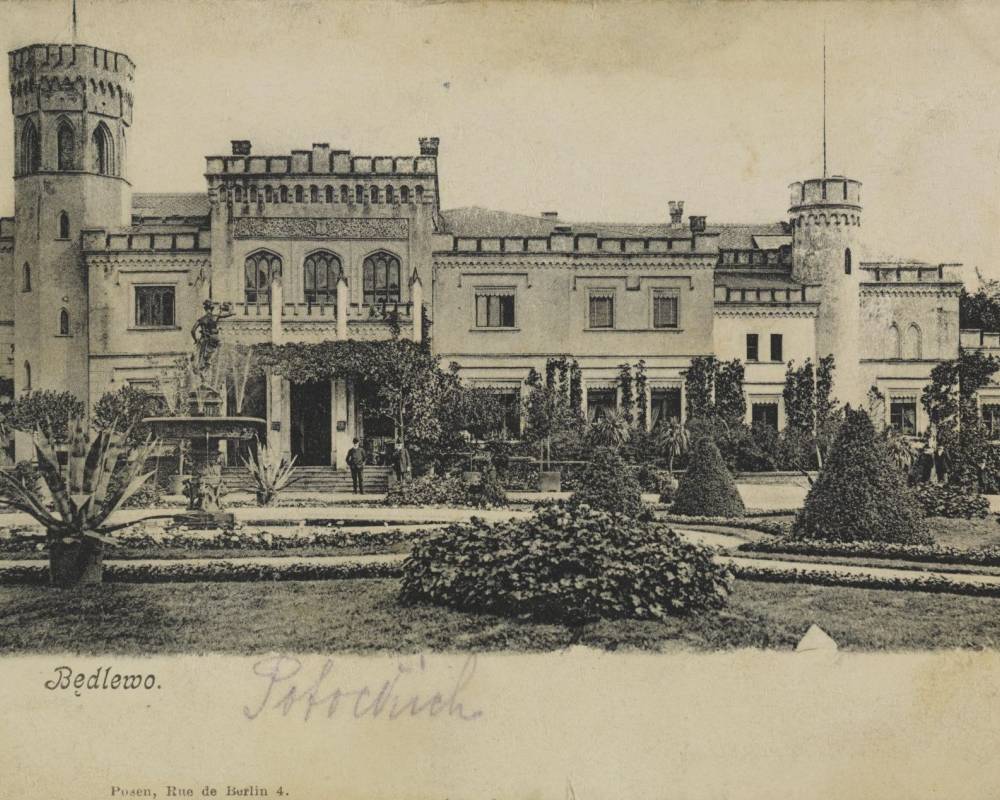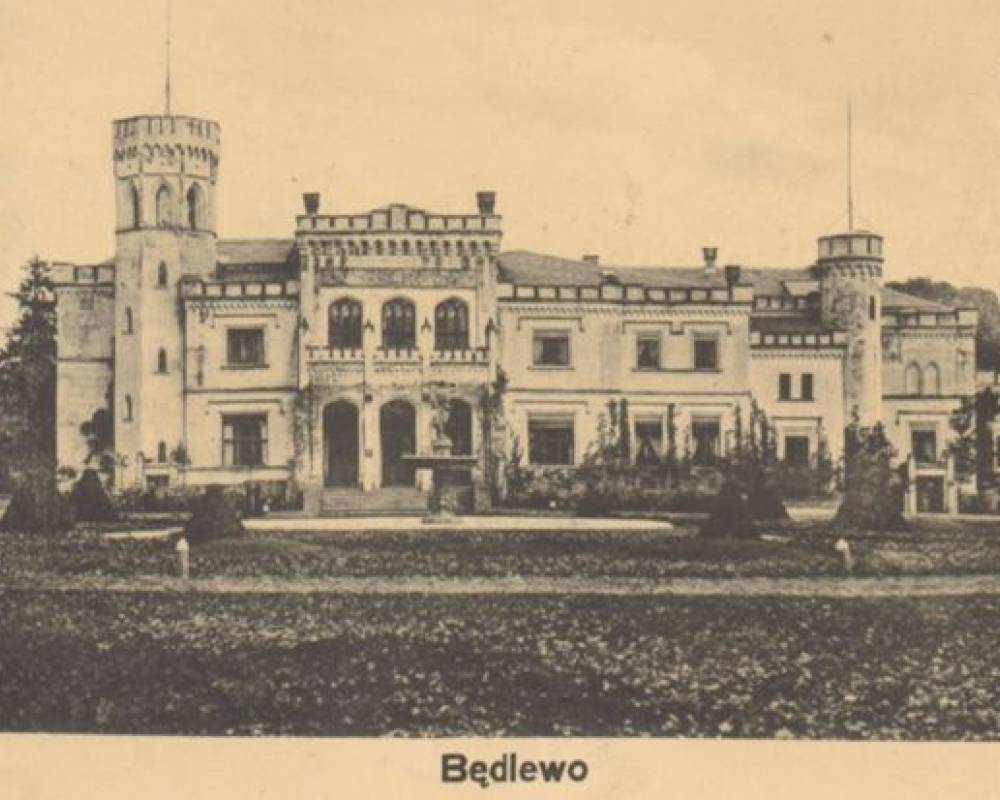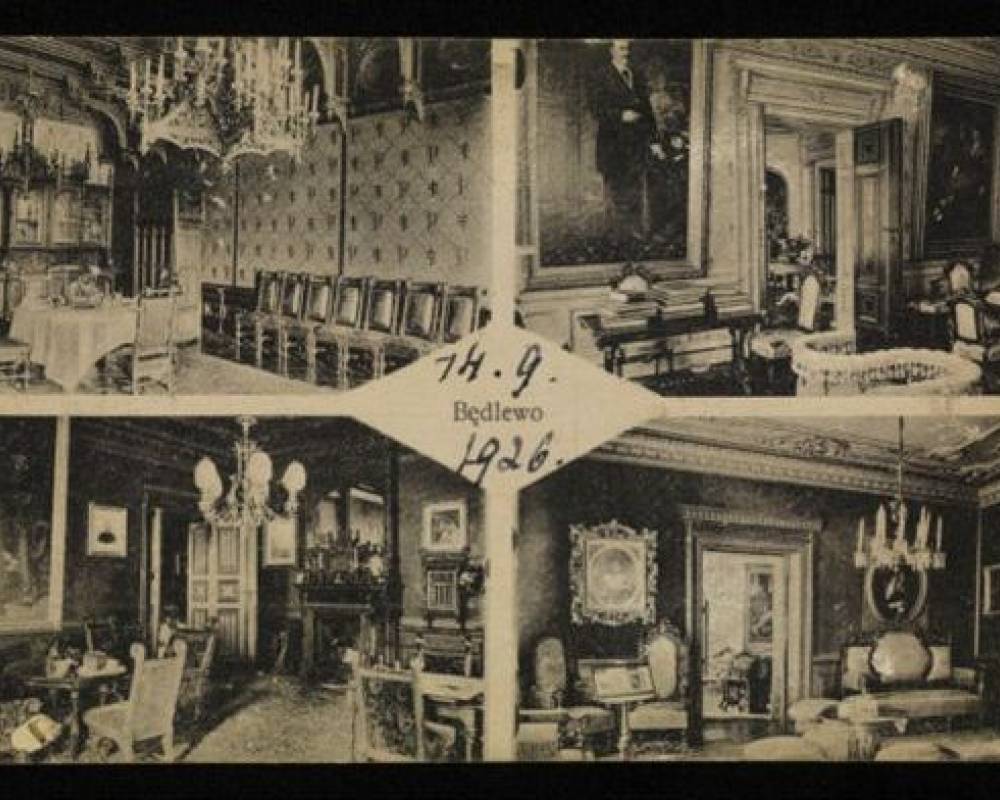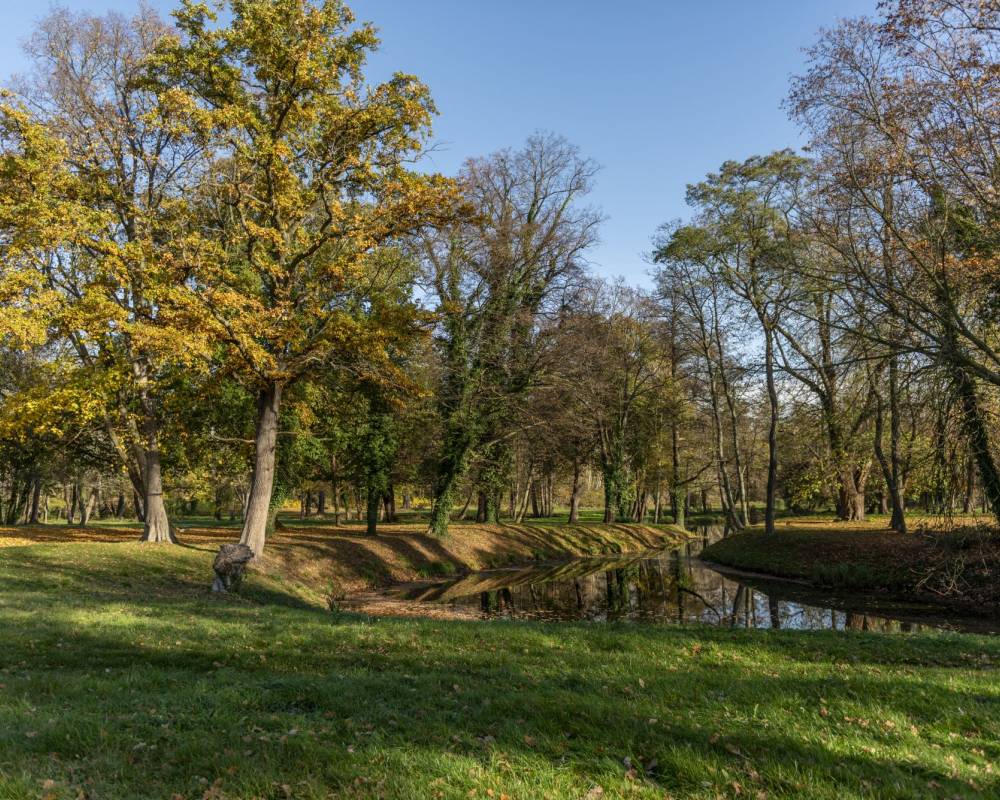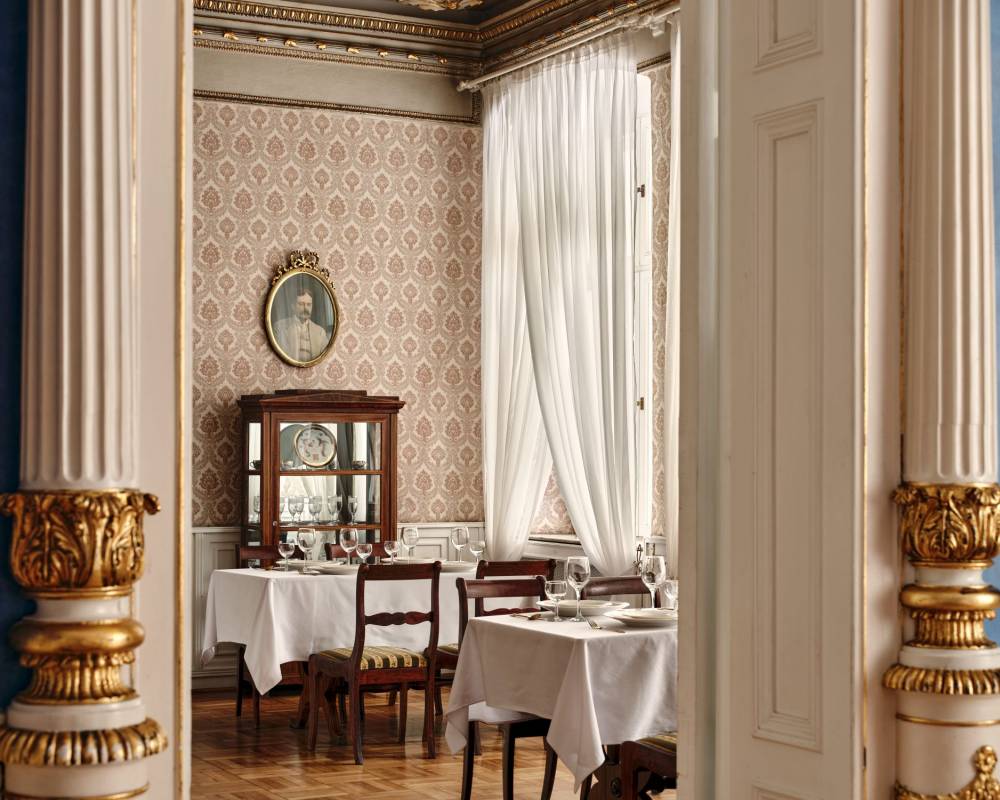History
The village of Będlewo was first mentioned at the end of the 12th century. The village was owned by a wealthy knightly family of the Łodzi family whose descendants bore the surname Będlewscy. The first known owner of Będlewo was Hugon Łodzia, considered to be the progenitor of the Łódź family, who lived at the turn of the 12th and 13th centuries (he died before 1241).
In the 17th century, the village belonged to the Grodzicki family, then to the Malechowski family. In 1694, the landed estates were purchased by Przecław from Potok Potocki of the Pilawa coat of arms, the huntsman of Kalisz and castellan of Rogoziński. His wife was Anna of Mieszkowski. From then on Będlewo belonged to the so-called Wielkopolska branch of the Potocki family and remained in their hands until the 20th century.
The most prominent owner of Będlewo was Bolesław Eulogiusz Potocki, who lived from 1829 to 1898 and inherited property from his father. He was married twice: in 1861 he married Helena, of Kwilecki, with whom he had a daughter, and then in 1871 married Józefa Mycielska, with whom he had sons Józef and Bolesław, and an extremely pretty daughter Felicja.
On his initiative, construction work was undertaken in 1866 to build a grand new residence in the Romantic English Neo-Gothic style. The new residence replaced the thatched manor house, which was located at the entrance gate to the estate. The author of the design of the palace is not known, but the interesting architecture demonstrates the skill of its creator, who may have originated from the Berlin architectural community.
Bolesław Potocki expanded the inherited 8,000-hectare estate to include Wronczyn, Dymaczewo, Zamysłowo, Srock, Wojnowice and Dakowy Mokre and introduced modern management methods, cultivation techniques and animal husbandry, significantly increasing the profitability of the entire estate.
Potocki was among the founders of the Poznań Journal. In 1863 he provided financial support for the January Uprising, and in 1866 he was granted life membership of the Poznań Society of Friends of Science.
In 1870, together with Mieczysław Kwilecki, he founded the Agricultural and Industrial Bank and the Bank Kwilecki, Potocki and Company in Poznań. In the same year he supported the initiative to build the Polish Theatre, (donating his own garden for the construction) which was initially named the "Polish Theatre in Potocki's Garden". In 1889 he was granted by Pope Leo XIII the hereditary title of Count of Rome and the new coat of arms Pilawa. Bolesław Potocki died in 1898 and was buried in Łódź near Stęszew.
At this point, it is worth mentioning that part of the estate was inherited as a dowry by his daughter Felicja, who, after marrying Maciej Mielżyński, settled in Dakowy Mokry. Their marriage ended with Felicja's tragic death in 1913. The story of their unhappy relationship is linked to the "Legend of the Black Lady of Będlewo".
After the death of Bolesław Potocki the owner of Będlewo became his eldest son, Józef Count Potocki, and after his heirless death Będlewo passed into the hands of Bolesław Potocki's daughter from his first marriage, Helena Miączyńska by Potocki.
Helena Countess Miączyńska died in Będlewo in 1937, but already in 1933, she handed over Będlewo to her daughter who owned it until the outbreak of the Second World War in 1939.
During World War II, the Third Reich commissioner for the consolidation of German nationality resided in the Palace. The Germans painted over the polychrome paintings in the Knights' Hall and destroyed portraits of Polish kings and palace furnishings. At the end of the war, all the buildings were looted.
After the war the estate was taken over by the State Treasury. After the liberation of Będlewo in January 1945, the communal Rural Agricultural School began operating in the palace.
From 1950 to 1969 the School of Surveyors, a branch of the Warsaw Training Centre of the Ministry of Agriculture and Agricultural Equipment, operated in the palace in Będlewo.
From 1969 to 1975, the palace housed the Primary Agricultural School.
In 1973 the palace was entered in the Register of Historic Monuments. Since 1976 it has been the seat of the Centre for Creative Work of the Poznań branch of the Polish Academy of Sciences.
Between 1979 and 1986, the Historic Preservation Studio carried out a complete renovation of the palace, which restored it to its former glory. The polychromes were uncovered, the roof was covered with copper sheet metal and dampness was removed from the building.
Since 1996, the palace and park complex has belonged to the Mathematical Institute of the Polish Academy of Sciences as a Research and Conference Centre.
In 1997, a hotel building was constructed, and conference rooms were created and equipped. The park was restored, and the ponds were cleaned.
Today, the grounds not only house one of the largest conference and research centres in Europe, but also beautiful palace suites and functional studios with kitchenettes. The centre's hotel accommodation can accommodate 180 people. Also noteworthy are the stylish interiors of the palace with the Knights' Restaurant and rooms where numerous private events are organised: weddings, communions, anniversaries, proms, banquets and balls.

